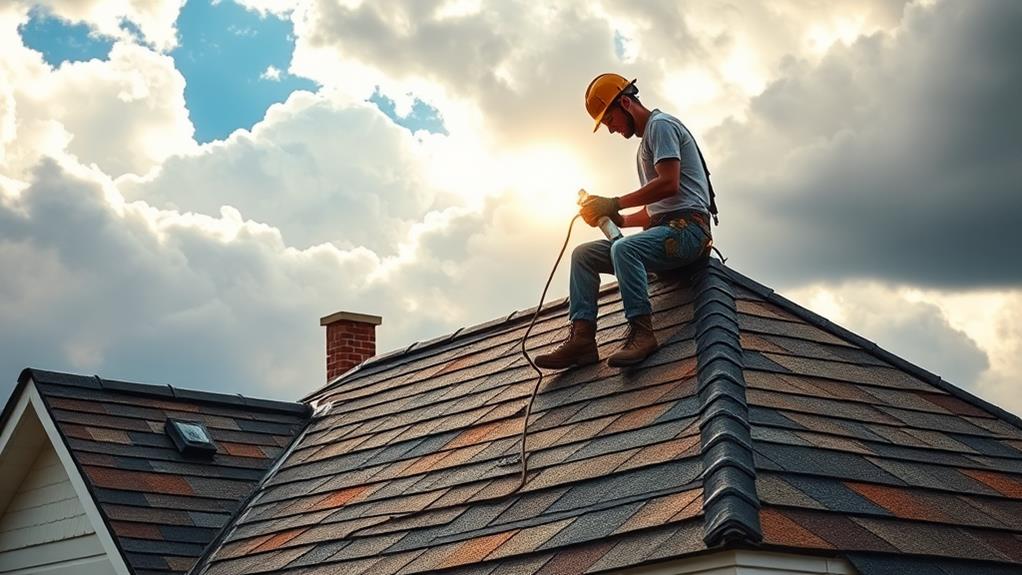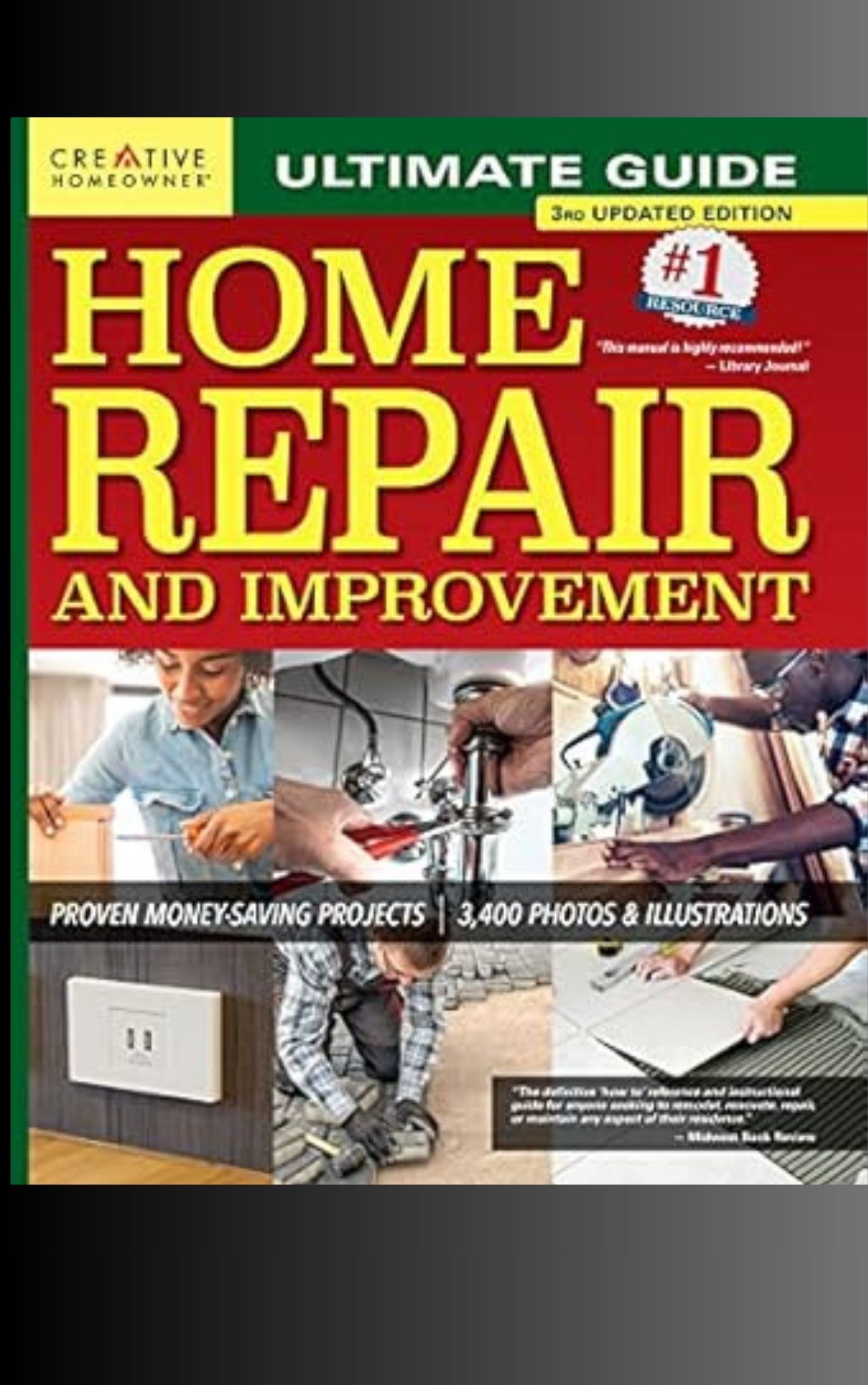When faced with storm-damaged roofs, homeowners must choose between temporary fixes and permanent solutions. Temporary options like tarps and sealants offer quick, short-term relief at lower costs but require frequent maintenance. Permanent solutions, including partial or complete roof replacement, provide long-lasting protection and improved home value but come with higher upfront expenses. While temporary fixes can range from $100 to $1,000, permanent solutions typically cost between $5,000 and $25,000. Factors such as roof age, damage extent, and potential insurance coverage should be considered when making this decision. Understanding the full spectrum of options and their long-term implications is crucial for making an informed choice.
Understanding Storm Damage

Battered by nature's fury, roofs often bear the brunt of storm damage. Understanding the extent and types of damage is crucial for homeowners and contractors alike. Storm damage can manifest in various forms, ranging from minor issues to severe structural compromises.
Common types of storm damage include missing or torn shingles, punctures from falling debris, and water infiltration. High winds can lift and remove shingles, exposing the underlying structure to moisture. Hail can create divots or cracks in roofing materials, compromising their integrity. Flying debris, such as tree branches, may puncture the roof surface, creating entry points for water.
Less visible damage can include loosened fasteners, separated seams in metal roofing, or compromised flashing around chimneys and vents. These issues may not be immediately apparent but can lead to long-term problems if left unaddressed.
Proper assessment of storm damage requires a thorough inspection, both from the ground and on the roof itself. Professional roofers use specific techniques to identify and document damage, including moisture detection tools and infrared cameras to locate hidden water intrusion.
Temporary Roof Repair Options
After identifying storm damage, immediate action is often necessary to prevent further deterioration of the roof and interior of the home. Temporary roof repair options provide quick solutions to protect the structure until permanent repairs can be made.
One common method is applying a tarp or plastic sheeting over the damaged area, securing it tightly to prevent water infiltration. This approach is effective for small to medium-sized leaks and can last several weeks if properly installed.
For more extensive damage, emergency roof sealants or patches can be used. These products, available at most hardware stores, adhere to various roofing materials and create a waterproof barrier. Roofing cement or mastic can also be applied to seal small holes or cracks. In cases of missing shingles, temporary replacements can be installed using roofing nails or adhesive.
For larger holes, a temporary plywood cover secured with screws and sealed with roofing cement can provide protection. It's important to note that these temporary fixes are not long-term solutions and should be followed up with professional repairs as soon as possible to ensure the roof's integrity and prevent further damage.
Permanent Roof Restoration Solutions

For long-term protection and structural integrity, permanent roof restoration solutions are essential following storm damage. These solutions address underlying issues and prevent future problems, ensuring the roof's longevity and performance.
One comprehensive approach is a complete roof replacement, which involves removing the damaged roofing materials and installing a new system. This option is ideal for extensively damaged roofs or those nearing the end of their lifespan. Professional roofers will assess the decking, replace damaged sections, and install new underlayment and roofing materials.
Partial roof replacement is suitable when damage is localized. This method involves replacing only the affected sections while preserving the intact areas. It's cost-effective and maintains the roof's overall integrity.
Roof reinforcement techniques, such as installing additional support beams or trusses, can strengthen the structure against future storms. This is particularly beneficial in areas prone to severe weather.
Advanced roofing materials, like impact-resistant shingles or metal roofing, offer enhanced durability and weather resistance. These materials can significantly improve the roof's ability to withstand future storm damage.
Professional inspection and maintenance plans should accompany any permanent solution to ensure ongoing protection and early detection of potential issues.
Cost Comparison
When evaluating storm damage repair options for roofs, understanding the cost implications of temporary fixes versus permanent solutions is crucial. Temporary fixes, such as patching or applying sealants, typically have lower upfront costs, ranging from $100 to $1,000 depending on the extent of damage. However, these solutions often require frequent maintenance and may need to be repeated multiple times, leading to higher cumulative costs over time.
Permanent solutions, like complete roof replacements or extensive repairs, have higher initial costs, typically ranging from $5,000 to $25,000 for residential properties. Despite the substantial upfront investment, these solutions offer long-term benefits, including improved durability, energy efficiency, and increased property value. Additionally, permanent fixes often come with warranties, reducing future repair expenses.
When comparing costs, it's essential to consider the roof's age, the extent of damage, and the property's location. While temporary fixes may seem more economical in the short term, they can lead to more significant issues and higher expenses if underlying problems are left unaddressed. Homeowners should also factor in potential insurance coverage and the impact on future premiums when deciding between temporary and permanent solutions.
Long-Term Benefits and Drawbacks

The long-term implications of choosing between temporary fixes and permanent solutions for storm-damaged roofs are significant. Temporary fixes, while initially cost-effective, often lead to recurring issues and increased expenses over time. These short-term repairs may fail to address underlying structural damage, potentially resulting in more severe problems and compromising the roof's integrity.
Permanent solutions, on the other hand, offer lasting benefits. They typically involve comprehensive repairs or complete roof replacement, addressing both visible and hidden damage. This approach enhances the roof's durability, extends its lifespan, and improves energy efficiency. Additionally, permanent solutions often come with warranties, providing long-term peace of mind for homeowners.
However, permanent solutions have drawbacks, including higher upfront costs and longer installation times. They may also require more extensive work, potentially disrupting daily life during the repair process. Conversely, temporary fixes allow for quick, minimally invasive repairs, which can be advantageous in emergency situations or when immediate weather protection is necessary. Ultimately, the choice between temporary and permanent solutions depends on factors such as budget, time constraints, and the extent of damage, with each option presenting distinct long-term considerations.
Making the Right Decision
Given the complex considerations surrounding temporary fixes and permanent solutions for storm-damaged roofs, homeowners face a challenging decision-making process. To make an informed choice, it's crucial to assess several factors:
- Extent of damage: Evaluate whether the damage is minor and localized or extensive and widespread.
- Financial capacity: Consider your budget for immediate repairs versus long-term solutions.
- Insurance coverage: Review your policy to understand what repairs are covered and any limitations.
- Weather forecast: Factor in upcoming weather conditions that may impact the urgency of repairs.
- Long-term plans: Consider how long you intend to stay in the property.
- Professional assessment: Consult with roofing experts to get a comprehensive evaluation and cost estimates.
Ultimately, the decision should balance immediate needs with long-term benefits. For minor damage, a temporary fix may suffice if you plan to replace the roof soon. However, for significant damage or if you intend to stay in the home long-term, investing in a permanent solution is often the wiser choice. Consider the potential cost savings, improved home value, and peace of mind that come with a comprehensive repair or replacement.
Frequently Asked Questions
How Long Does a Typical Temporary Roof Repair Last?
A typical temporary roof repair can last anywhere from a few weeks to several months, depending on the extent of damage, quality of materials used, and environmental conditions. Regular inspections are crucial to monitor its effectiveness over time.
Can I Claim Insurance for Both Temporary and Permanent Roof Repairs?
Insurance claims for both temporary and permanent repairs are often possible. However, policies vary. Consult your insurance provider, document all damages, and obtain professional assessments. Timely reporting and thorough documentation increase the likelihood of successful claims for both repairs.
Are There Eco-Friendly Options for Permanent Roof Restoration?
Yes, eco-friendly options for permanent roof restoration exist. These include solar tiles, recycled shingles, green roofs with vegetation, cool roofs reflecting sunlight, and sustainably sourced materials like reclaimed wood or metal. Each option offers unique environmental benefits.
What Tools Are Needed for DIY Temporary Roof Repairs?
For DIY temporary roof repairs, essential tools include a ladder, safety harness, roofing nails, hammer, pry bar, utility knife, roofing cement, tarp, and plywood sheets. Personal protective equipment like gloves and safety glasses are also crucial.
How Can I Prevent Future Storm Damage to My Newly Repaired Roof?
To prevent future storm damage to your newly repaired roof, consider installing impact-resistant shingles, reinforcing roof decking, and regularly maintaining gutters. Trim overhanging tree branches, ensure proper attic ventilation, and have professional inspections annually to identify potential vulnerabilities.
Conclusion
The debate between temporary fixes and permanent solutions for storm-damaged roofs ultimately hinges on factors such as cost, time constraints, and long-term property value. Recent studies suggest that while temporary repairs may offer immediate relief, they often lead to increased expenses over time. Conversely, permanent solutions, though initially more costly, provide superior protection and can enhance a property's resilience to future storms. Homeowners and property managers must carefully weigh these factors to make informed decisions that balance immediate needs with long-term benefits.

